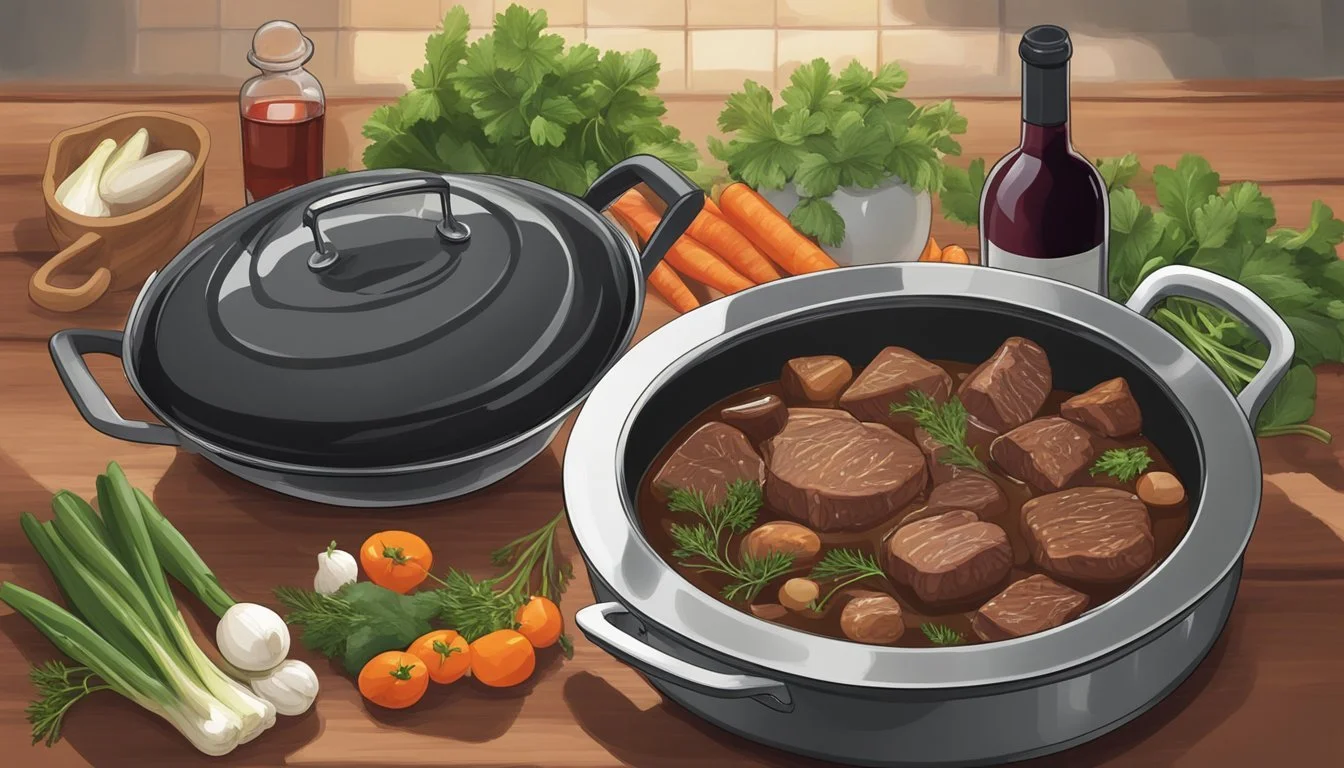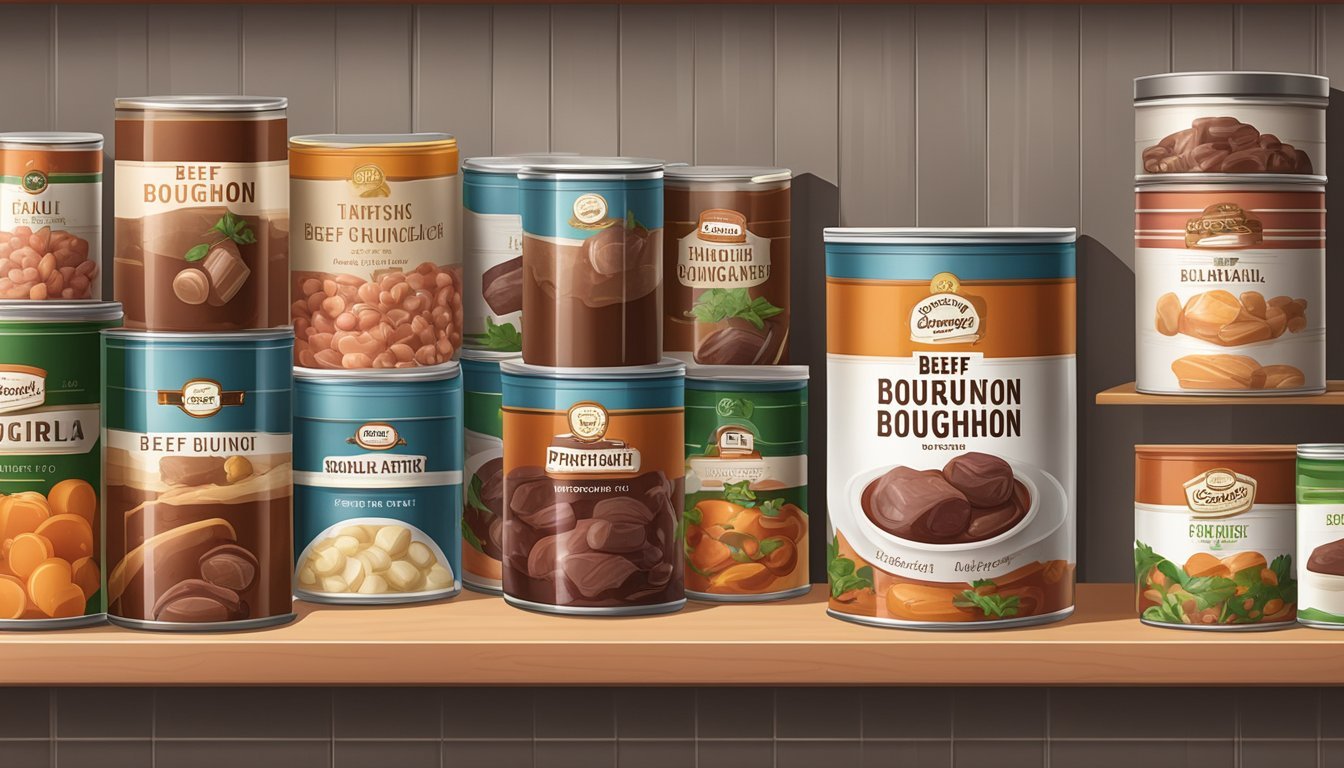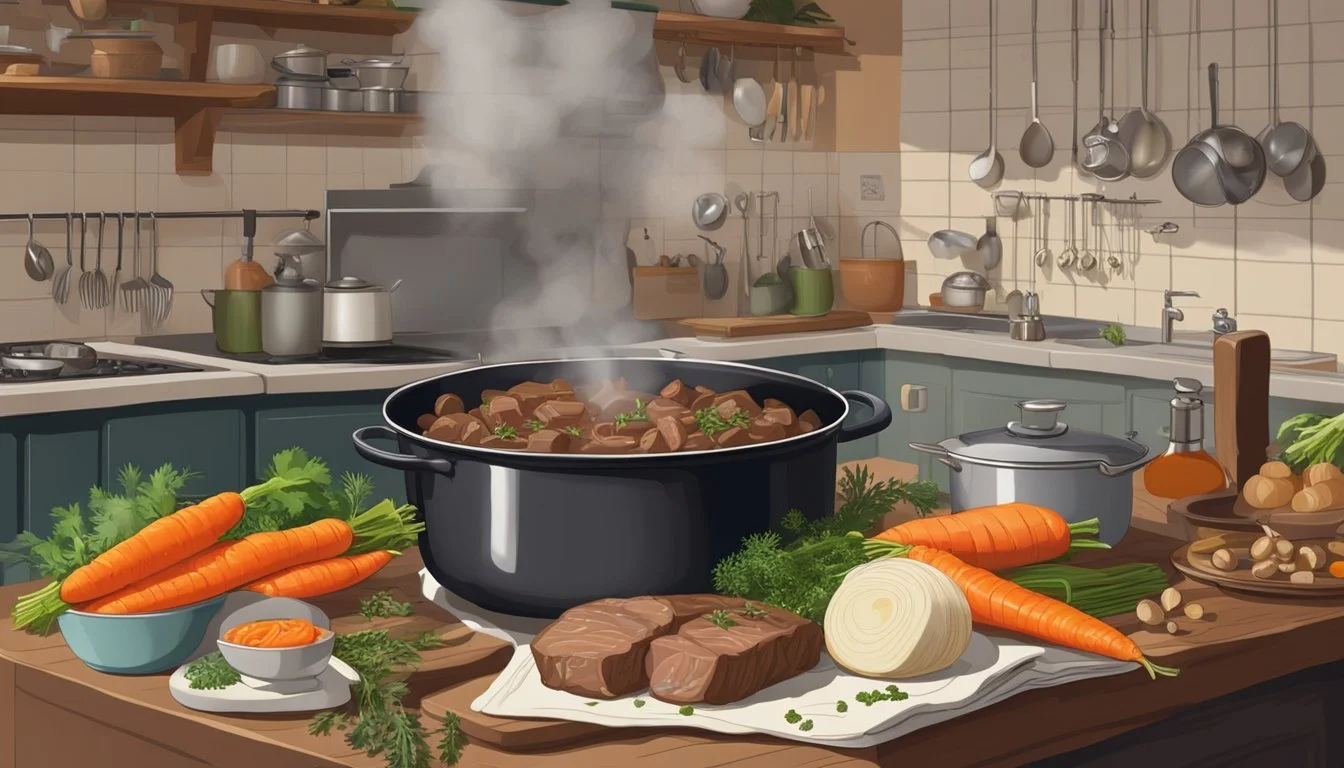How Long Does Beef Bourguignon Last?
Storage Tips and Shelf Life
Beef Bourguignon, a classic French stew, not only delights with its rich flavors but also offers the practical advantage of being prepared in advance. This dish can last in the refrigerator for up to 3-4 days when stored properly in an airtight container. For those looking to keep it even longer, freezing can extend its life to about 2-3 months.
The extended shelf life makes Beef Bourguignon an excellent option for meal planning and entertaining. Reheating the stew often enhances its deep, savory taste, making it just as enjoyable, if not more so, the next day. This versatility adds to its appeal, ensuring it remains a favorite in any culinary repertoire.
Understanding how to store and enjoy Beef Bourguignon over several days can make it a go-to meal for busy weeks or special occasions. With proper storage techniques, this beloved dish can continue to bring comfort and satisfaction well after it's first made.
Beef Bourguignon Overview
Beef Bourguignon, a French classic, is a rich beef stew known for its deep flavors. It features chunks of beef slow-cooked in red wine, alongside aromatic vegetables and seasonings.
Historical Context
Beef Bourguignon originates from Burgundy, France, a region famous for its wine and cuisine. Traditionally, this dish was a peasant meal, made from affordable cuts of beef that benefit from long, slow cooking. Julia Child, an iconic chef, popularized Beef Bourguignon in the United States through her cookbook Mastering the Art of French Cooking. Today, it is considered a staple of French culinary heritage, celebrated for its hearty and comforting qualities.
Key Ingredients
The essential ingredients for Beef Bourguignon include beef (preferably, chuck or brisket), red wine (typically Burgundy), bacon, mushrooms, carrots, onions, garlic, tomato paste, and beef broth. Aromatic herbs such as thyme, bay leaves, and parsley enhance the dish's depth. Sometimes, veal demi glacé and pearl onions are added for extra richness and sweetness. This array of simple, yet flavorful ingredients combines to create a savory stew with complex notes.
Cooking Techniques
The cooking process involves several key steps: First, the beef is browned in a Dutch oven along with bacon to build a rich base. Vegetables and wine are added, and this mixture is brought to a boil to deglaze the pan. The beef and bacon are then returned to the pot, which is covered and baked slowly for several hours. This slow-cooking process allows the meat to become tender and the flavors to meld beautifully. To achieve perfect results, the dish may be cooked over two to three days, where marinating overnight can greatly enhance taste and texture.
Storage Guidelines
To extend the shelf life of beef bourguignon and maintain its taste and texture, it is essential to store it correctly. This section covers the best practices for refrigerating and freezing beef bourguignon.
Refrigerating Beef Bourguignon
Beef bourguignon should be cooled completely before storing in the refrigerator. It is best to transfer the dish to airtight containers to prevent bacterial growth and retain flavor.
Set your refrigerator to 40°F (4.4°C) or lower to preserve the stew. Under optimal conditions, beef bourguignon will last in the fridge for 3 to 5 days. Ensure it is always stored in airtight containers to maintain freshness.
Label containers with dates to track how long the beef bourguignon has been stored. Proper storage practices can prevent spoilage and ensure a delicious meal when reheated.
Freezing Beef Bourguignon
For longer storage, freezing beef bourguignon is an excellent option. It is recommended to use airtight containers or vacuum-sealed bags to preserve flavors and textures.
Beef bourguignon can be frozen for up to 2 to 3 months without compromising its taste. Always cool the dish completely before freezing to prevent ice crystals from forming.
Prior to freezing, portion the beef bourguignon into meal-sized servings if possible. This makes reheating easier and reduces waste. Label and date each container, ensuring you use it within the suggested timeframe for best quality.
Shelf Life
Beef Bourguignon can last for several days if stored correctly. Different storage methods can significantly impact how long the dish remains safe and tasty to consume.
In the Refrigerator
When properly stored, Beef Bourguignon can last 3 to 4 days in the refrigerator. It's essential to transfer the stew into airtight containers to prevent contamination and maintain freshness.
After cooking, let the stew cool completely before refrigerating. This step is crucial as placing hot food directly into the fridge can cause condensation, leading to bacterial growth. Keeping the refrigerator temperature at or below 40°F (4.4°C) provides an optimally safe environment. Depending on the ingredients used, the shelf life might vary slightly.
Labeling the container with the date of storage helps in tracking its freshness, ensuring consumption within the safe timeframe.
In the Freezer
For longer storage, Beef Bourguignon can be frozen for 2 to 3 months without losing too much of its quality. Dividing the stew into meal-sized portions before freezing can make it easier to thaw and reheat only what is needed.
Use airtight containers or vacuum-seal bags to prevent freezer burn, which can affect the taste and texture. Before freezing, ensure the stew has cooled completely.
When ready to consume, defrost the stew in the refrigerator overnight instead of at room temperature to avoid bacterial growth. Reheat thoroughly before serving to maintain its rich flavors and velvety texture.
Reheating Instructions
Properly reheating beef bourguignon ensures it retains its delicious flavor and texture. Whether using an oven, stove, or microwave, it's crucial to heat the dish evenly and prevent overcooking.
Using Oven or Stove
Oven Method
Preheat the oven to 325°F (165°C).
Transfer the beef bourguignon to an oven-safe dish.
Cover with foil or a lid to maintain moisture.
Heat for 20-30 minutes, checking halfway through.
Add liquid if the sauce is drying out.
Stove Method
Place the stew in a pot over medium-low heat.
Stir occasionally to ensure even heating.
Add a few tablespoons of stock to refresh the stew.
Reheat for 5-10 minutes until it begins bubbling.
Simmer for an additional 2-3 minutes.
Using Microwave
Divide the beef bourguignon into small portions for uniform heating.
Place the portions in a microwave-safe container.
Cover with a microwave-safe lid or vented plastic wrap (avoid direct contact with the food).
Set microwave to 50% power (medium) to prevent overcooking.
Heat for 3-4 minutes, then stir.
Continue heating in 1-minute intervals until fully heated.
When properly reheated, beef bourguignon should be hot throughout but not overcooked, retaining its rich flavors and tender texture.
Health and Safety
When preparing and storing beef bourguignon, attention to food safety and awareness of its nutritional content are vital. Proper handling ensures the dish remains safe to eat and maintains its best quality.
Food Safety Concerns
Beef bourguignon should be stored in the refrigerator within two hours of cooking, kept in airtight containers. Ideally, it remains safe and good quality for 3 to 5 days. Beyond this period, both the beef and vegetables might start to dry out or lose flavor.
To reheat, bring the dish to a temperature of at least 165°F to avoid risks of foodborne illnesses. Avoid leaving beef bourguignon at room temperature for prolonged periods to prevent bacterial growth, such as Escherichia coli and Salmonella.
Nutritional Information
Beef bourguignon is rich in nutrients and typically contains around 260-300 calories per serving. Key ingredients include beef, which is a significant source of protein and iron, providing the body's needed nutrients to maintain muscle and blood health.
The dish often includes fat from beef and bacon, contributing to a substantial amount of saturated fat. However, the vegetables and red wine used also offer beneficial antioxidants and fibers. Monitoring portion sizes can help manage calorie intake and balance nutritional needs.
Serving Suggestions
When serving beef bourguignon, it's important to choose accompaniments that complement its rich flavors. Common pairings include mashed potatoes, fresh baguettes, or a light salad.
Accompaniments
Mashed Potatoes
Mashed potatoes are a classic side dish for beef bourguignon. The creamy texture of the potatoes helps balance the richness of the stew. They also absorb the sauce well, ensuring each bite is flavorful.
Baguette
A fresh baguette can be an excellent accompaniment. The crusty bread offers a nice contrast to the tender beef and can be used to soak up the delicious sauce. Serving slices of baguette alongside the main course adds a touch of French authenticity to the meal.
Main Course Servings
For the main course, serving beef bourguignon with a light salad, such as a Kale Caesar Salad, adds a refreshing element. The slight bitterness of the kale balances the hearty flavors of the stew. This combination provides nutritional balance and enhances the overall dining experience.
Culinary Tips
Enhancing the depth of flavor in beef bourguignon and exploring different cooking methods can elevate this classic dish to gourmet status.
Improving Flavor
A key ingredient in beef bourguignon is red wine, which adds complexity and richness. It's essential to use a good-quality wine, as it greatly impacts the final taste.
Searing the beef well before braising is crucial. This step caramelizes the surface of the meat, locking in juices and adding a robust flavor.
Bacon can enhance the dish by providing a smoky backdrop. Brown the bacon until it is crispy, then use the rendered fat for cooking the vegetables.
Incorporate fresh herbs like thyme and bay leaves. Garlic should be added towards the end of sautéing to prevent bitterness.
Cooking Alternatives
The traditional method for cooking beef bourguignon involves using a Dutch oven. This heavy pot ensures even heat distribution, which is perfect for long, slow braising in the oven.
For modern convenience, a slow cooker can be used. Cook on low for about 8 hours, allowing the flavors to meld beautifully over time.
An Instant Pot offers a quicker alternative. Use the sauté function to sear the meat, then pressure cook for about 60 minutes to achieve tender results.
Regardless of the method, the goal is to maintain low, steady heat to tenderize the beef and marry the flavors together.
Recipe Variations
Beef Bourguignon can be customized by altering the meat or adding various vegetables, enhancing the traditional recipe with new flavors while maintaining its rich, hearty essence.
Meat Substitutes
Beef is the traditional choice for Bourguignon, but other meats can be used. Lamb is a great option, providing a different flavor profile while still pairing well with the wine-based sauce. Pork shoulder is another choice, offering a slightly sweeter taste and tender texture.
For a more unique twist, consider venison. It adds a gamey flavor that stands up to the robust sauce. Note, however, that each meat may have different cooking times and require adjustments to achieve the desired tenderness.
Vegetable Add-Ins
Traditionally, Beef Bourguignon includes vegetables like carrots and onions. For added depth, introduce pearl onions, which offer a subtle sweetness. Mushrooms are another classic addition, enhancing the umami notes of the dish.
Other vegetables can also be incorporated. Parsnips add earthiness, while celery provides a touch of bitterness to balance the flavors. For a slightly sweeter note, add turnips. Regardless of your choices, ensure all vegetables are cut uniformly to maintain even cooking.










